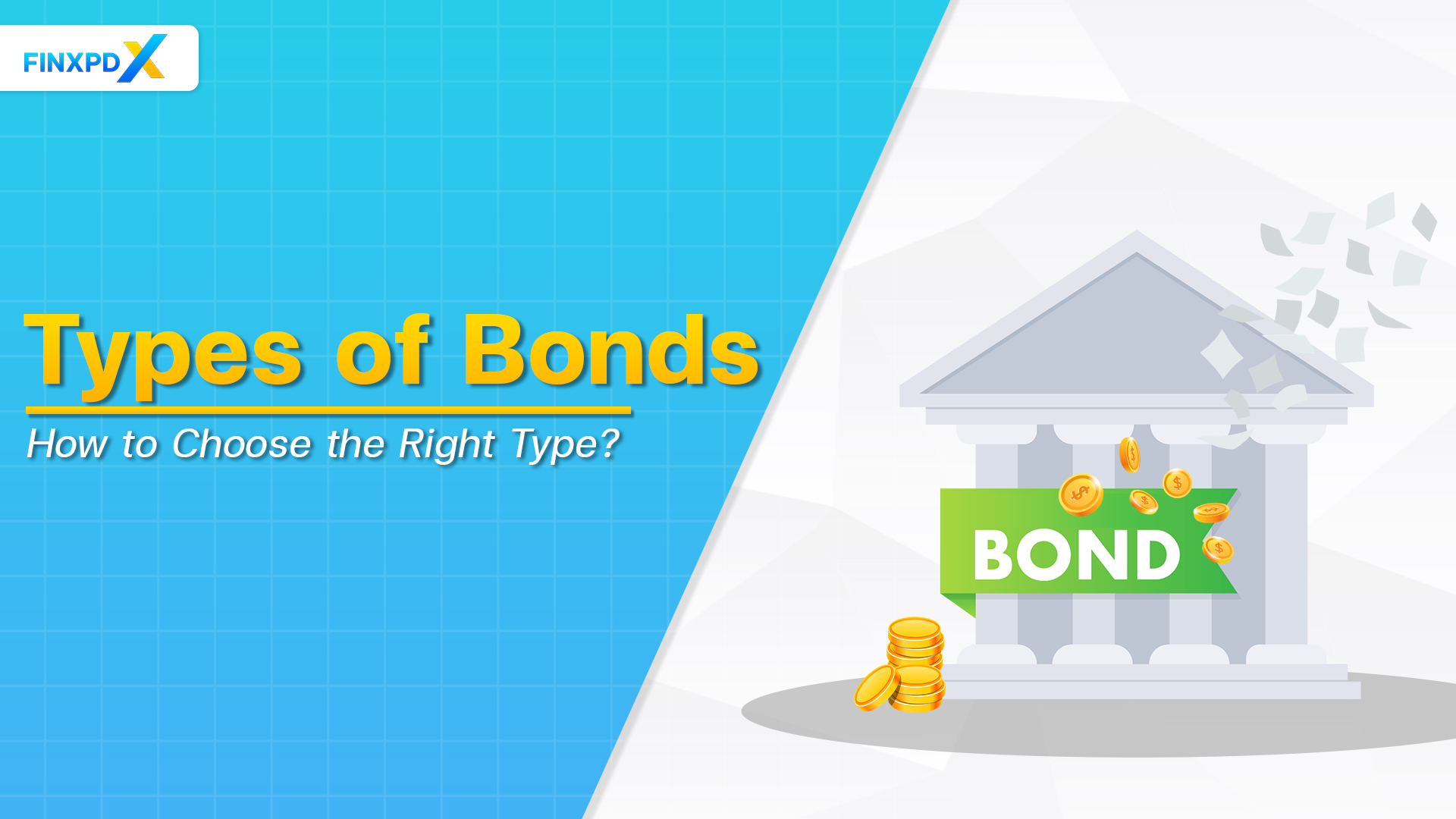One of the most traditional yet effective instruments to grow your wealth is bonds. Understanding the different types of bonds is vital for diversifying your investment portfolio. Whether you’re a seasoned investor or just starting, this comprehensive guide aims to demystify what is bonds and how to invest in bonds.
This article will discuss the key features of bonds, the five main types of bonds in finance, and how to make informed decisions to buy the right ones for you.
What Is Bonds?
A bond is a type of loan made by an investor to a borrower, typically a corporate or governmental entity. When you invest in a bond, you’re effectively loaning out your money to that entity. In exchange, they commit to paying back the principal amount by a specific date, known as the bond’s maturity date.
On top of this, the bond issuer pays interest, commonly referred to as the bond’s “coupon,” to the bondholder at regular intervals. This interest is typically the main attraction for investors—it’s a way to earn a return on the loan.
Key Takeaways
- A bond is basically a loan that an investor gives to a borrower.
- Bonds are one of the most traditional yet effective investment instruments.
- The interest rate of a bond is commonly known as the coupon.
- The maturity date specifies when you need to pay back the main amount of the bond.
- Government agencies, municipalities, and corporations issue different types of bonds.
5 Main Types of Bonds
In this section, we will discuss 5 types of bonds: U.S. treasury bonds, savings bonds, agency bonds, municipal bonds, and corporate bonds. Each of these comes with its own set of pros and cons and is suitable for different types of investors.
1. U.S. Treasury Bonds
U.S. Treasury bonds are considered the gold standard of bonds, offering the highest level of security. They are issued by the U.S. government and are ideal for those who are looking for a risk-free investment option. The features of bonds like these usually include long-term maturity periods, ranging from 20 to 30 years, and a fixed interest rate.
Pros
- Risk-free
- Backed by U.S. Government
- Reliable interest payments
Cons
- Lower interest rates
- Not ideal for short-term
- Less liquidity
Who Are These Bonds For?
U.S. Treasury bonds are perfect for investors looking for a safe, long-term investment and who are less concerned with high returns.
2. Savings Bonds
Savings bonds are another type of U.S. government-issued bonds, but they differ from treasury bonds in several ways. Ideal for small investors, these bonds are non-marketable, meaning you can’t sell them before they mature. The features of bonds like savings bonds usually include a smaller investment amount and an interest rate that compounds semi-annually.
Pros
- Low minimum investment
- Backed by U.S. Government
- Simple to understand
Cons
- Can’t be sold before maturity
- Lower yield
- Limited to U.S. citizens
Who Are These Bonds For?
Savings bonds are suitable for those who want to invest in bonds with a small amount of money and can commit to not accessing it for a specific period.
3. Agency Bonds
Agency bonds are issued by government-sponsored entities like Freddie Mac and Fannie Mae. These types of bonds fall somewhere between U.S. Treasury bonds and corporate bonds in terms of risk. While they are not fully backed by the U.S. government, they carry a lower level of risk compared to corporate bonds. Their features of bonds often include higher yields compared to U.S. treasury bonds and varying maturity periods.
Pros
- Higher yield than treasury bonds
- Lower risk than corporate bonds
- Diverse maturity options
Cons
- Not fully government-backed
- Sensitive to economic changes
- May have higher costs
Who Are These Bonds For?
Agency bonds are well-suited for investors looking for a middle-ground between the safety of U.S. Treasury bonds and the higher yields of corporate bonds.
4. Municipal Bonds
Municipal bonds are issued by local governments, cities, or states to finance public projects like schools, highways, and water systems. These types of bonds offer tax advantages, as the interest income is often exempt from federal taxes. Depending on where you reside, they may also be state and local tax-exempt, making them unique in features of bonds.
Pros
- Tax-exempt interest
- Supports local projects
- Good for portfolio diversification
Cons
- Lower yield
- Risk varies by municipality
- Limited liquidity
Who Are These Bonds For?
Municipal bonds are an excellent choice for tax-sensitive investors looking to diversify their portfolios while supporting local public projects.
5. Corporate bonds
Corporate bonds are issued by companies to raise capital for various business needs. Of all the types of bonds in finance, these typically offer the highest yields but also come with higher risk. They’re not government-backed, so it’s crucial to assess the issuing company’s financial stability. The features of bonds like these can range from short-term to long-term maturities and may include options like convertible bonds, which can be turned into stock.
Pros
- Higher yield
- Variety of options
- Can be converted to stock
Cons
- Higher risk
- Sensitive to the company’s health
- Complexity in features
Who Are These Bonds For?
Corporate bonds are a good fit for investors who are willing to take on more risk for the possibility of higher returns. It’s crucial to do due diligence on the issuing company before investing.
How to Buy Bonds?
When it comes to how to invest in bonds, the process can be simpler than you might think, but there are important considerations to keep in mind. This section provides a step-by-step guide for buying bonds.
Step 1: Determine Your Investment Goals
The first thing you need to do before entering the bond market is to clarify your investment objectives. This could range from seeking a stable income, and diversifying your portfolio, to capital preservation. Use a financial calculator or spreadsheet to lay out your financial goals, comparing them with the expected yield and maturity dates of various types of bonds.
Step 2: Research Different Types of Bonds
After you’ve set your goals, it’s crucial to familiarize yourself with the different types of bonds in finance. You should consider the associated risks, yield, and other features of bonds for each type. Utilize online resources like bond rating agencies to understand the risk levels, and delve into market reports and white papers to capture the prevailing sentiment around different bonds.
Step 3: Choose a Broker or Advisor
To purchase bonds, you’ll typically go through a broker or financial advisor. Selecting the right platform is important, so take time to compare fees, platform usability, and the range of bond offerings from multiple service providers.
Step 4: Analyze and Select Bonds
Having set up your brokerage account, the next step is to delve deeper into your chosen types of bonds. Scrutinize credit ratings, interest rates, and maturity periods. Employ bond calculators and professional advice to fine-tune your selections, ensuring they align with your investment goals.
Step 5: Make the Purchase
Once you’re confident in your choices, proceed to purchase the bonds either through your broker or via your online platform. Keep in mind that there may be additional costs, such as transaction fees, commissions, and other charges that could affect your total investment.
Step 6: Monitor Your Investment
After successfully purchasing your bonds, it’s vital to continue monitoring their performance. Set up alerts for changes in bond ratings or significant market events. Consistently review your bond portfolio and consider rebalancing if your original objectives change.
How to Choose the Right Types of Bonds?
Here are a few key factors that can guide your decision-making process, helping you pick bonds that best align with your financial goals and risk tolerance. Here are details on how to make this critical choice:
1. Assess Your Risk Tolerance
Understanding how much risk you’re willing to assume is crucial in picking the right types of bonds. Government bonds like U.S. Treasuries are generally low-risk, whereas corporate bonds offer higher yields but come with more risk.
2. Consider Your Investment Timeframe
The length of time you intend to invest is another factor to consider. Short-term bonds are less sensitive to interest rate changes, while long-term bonds offer higher yields but are more susceptible to market fluctuations.
3. Examine Credit Ratings
Credit ratings offer insight into the creditworthiness of the bond issuer. A high rating usually indicates a lower risk but often comes with lower yields. Make sure to look at ratings from reputable agencies.
4. Factor in Current and Future Interest Rates
Interest rates directly impact bond prices. When rates rise, bond prices generally fall, and vice versa. Therefore, it’s important to factor in current and anticipated future rates in your investment decision.
5. Look at Additional Bond Features
Some bonds come with extra features, such as being callable, meaning the issuer can redeem the bond before maturity. Examine the bond’s indenture for such features and consider how they align with your investment strategy.
6. Diversify Your Bond Portfolio
Don’t put all your eggs in one basket. Diversification across different types of bonds in finance can help mitigate risks and maximize returns. A mix of government, municipal, and corporate bonds can create a balanced portfolio.
Conclusion
Bonds are among the most reliable investment options available, providing a variety of risk and return profiles that cater to the unique needs of different investors. From the solid security of U.S. treasury bonds to the higher-yielding, albeit riskier corporate bonds, there’s a bond type tailored to meet each investor’s financial objectives.
By getting to know the different types of bonds, figuring out how much risk you’re comfortable with, and carefully studying where to invest. People can use bonds to earn a steady income, protect their money, or spread out their investments. Even when markets change, bonds continue to be a key part of a good investment plan.
FAQs
There are numerous types of bonds in finance, each catering to different investment needs and risk profiles. However, the primary ones include government bonds, corporate bonds, municipal bonds, agency bonds, and U.S. Treasury bonds.
The safest type of bond is generally U.S. Treasury bonds. They are backed by the full faith and credit of the U.S. Government, making them virtually risk-free.
In the context of chemistry, covalent bonds are often considered the strongest. However, if referring to financial strength and reliability, U.S. Treasury bonds are seen as one of the most dependable bond investments.
No bond is truly “risk-free,” but U.S. Treasury bonds come close. They have the backing of the U.S. Government, so the risk of default is extremely low. However, it’s essential to remember that while the risk of default is low, it can still be affected by market conditions and changes in interest rates.
Related Articles:
- Best Index Funds in India: How to Choose the Best One?
- Money Market Instruments: Get to Know Financial Complexities
Read more: Funds & Loans








